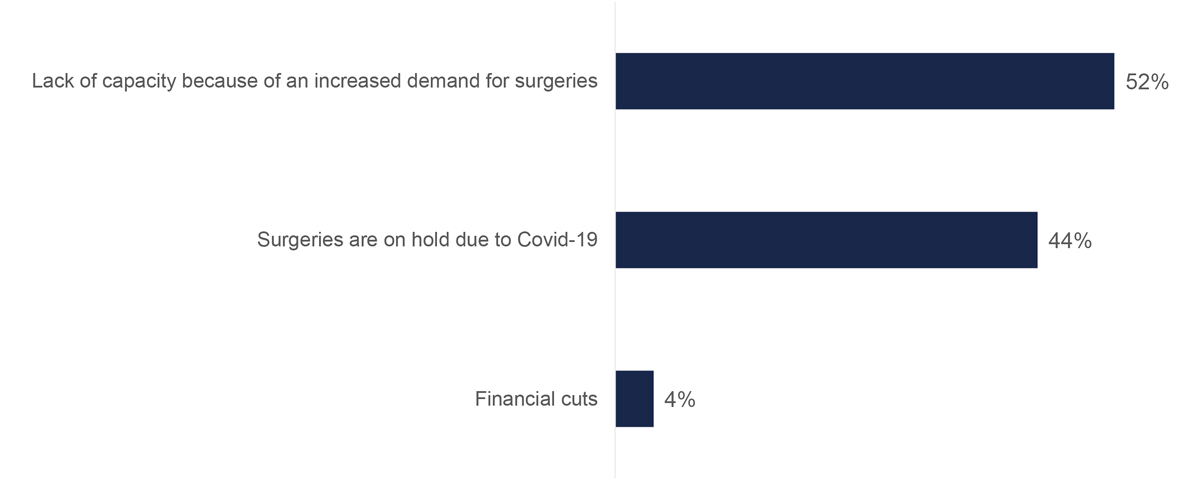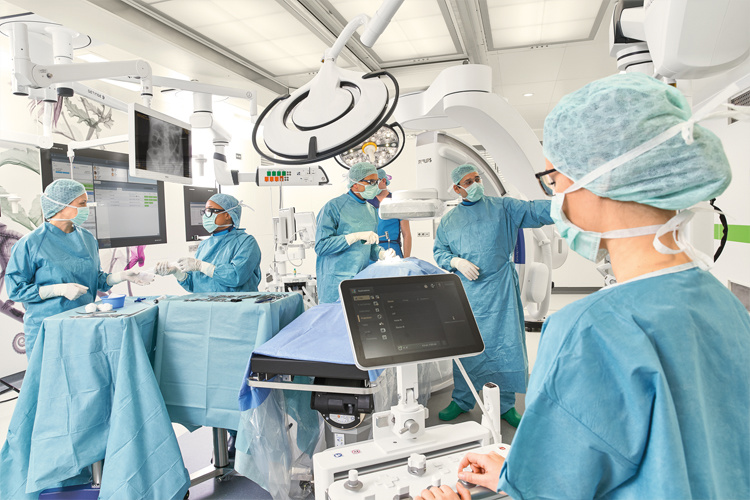A new study shows that few hospitals use highly effective, currently available AI technology to help prioritize workflow and increase the number of surgeries they can perform. Most think hiring more personnel and asking staff to work even longer hours is the solution to the backlog of non-emergency surgeries caused by the COVID-19 pandemic.
Manage your surgical waiting list
The study revealed that almost half of U.S. hospitals are battling increased waiting lists for elective and non-emergency surgeries. Of those with a waiting list, close to 80% say that it’s already causing them great concern.
But more than half of the hospitals surveyed – 55% – acknowledged they don’t use advanced digital tools to improve effectiveness and prioritize surgical waiting lists. Instead, they try to shorten surgical turn-over times, hire additional personnel and ask existing staff to work longer hours.
Around the world, millions of candidates for non-emergency surgeries are waiting for care. Doctors and operating room staff are exhausted from working overtime to meet the need, and hospitals are suffering from financial strain. Artificial intelligence and machine learning have huge potential to increase the number of surgeries and help prioritize.
The AI advantage
Using digital tools and machine learning to prioritize surgery scheduling can significantly increase efficient use of the operating theater. In fact, in current trials, Getinge’s own tool, Torin, improved the accuracy of operating time predictions by up to 34% on average.
Yet only three out of ten hospitals in the survey say their existing systems consider patient data scoring and artificial intelligence when prioritizing surgical waiting lists. Among the ambulatory/outpatient surgery centers, almost 70% stated their surgical planning and prioritizing processes still involve manual work with phone calls, pen and paper!
Scheduling surgeries includes a huge number of variables – the kind of problem that gives AI an advantage over the human brain in solving. The Torin AI algorithm takes into account 27 variables – things like the patient’s age and body mass index, or when the surgeon last performed this procedure, or how many times he or she has done it this month – just to predict surgery times.
Main reasons for surgical backlog

Paired with other digital tools also already available, Torin Optimization could provide an answer to surgical wait times and start to reduce the backlog today.
We can train the machine learning algorithm to predict those times much more accurately. So you can compare the surgeries you planned with what actually happened in the room in real time and see to what degree your plan is accurate. Drilling into the numbers, you can identify problems and change processes or workflow to be more efficient.
